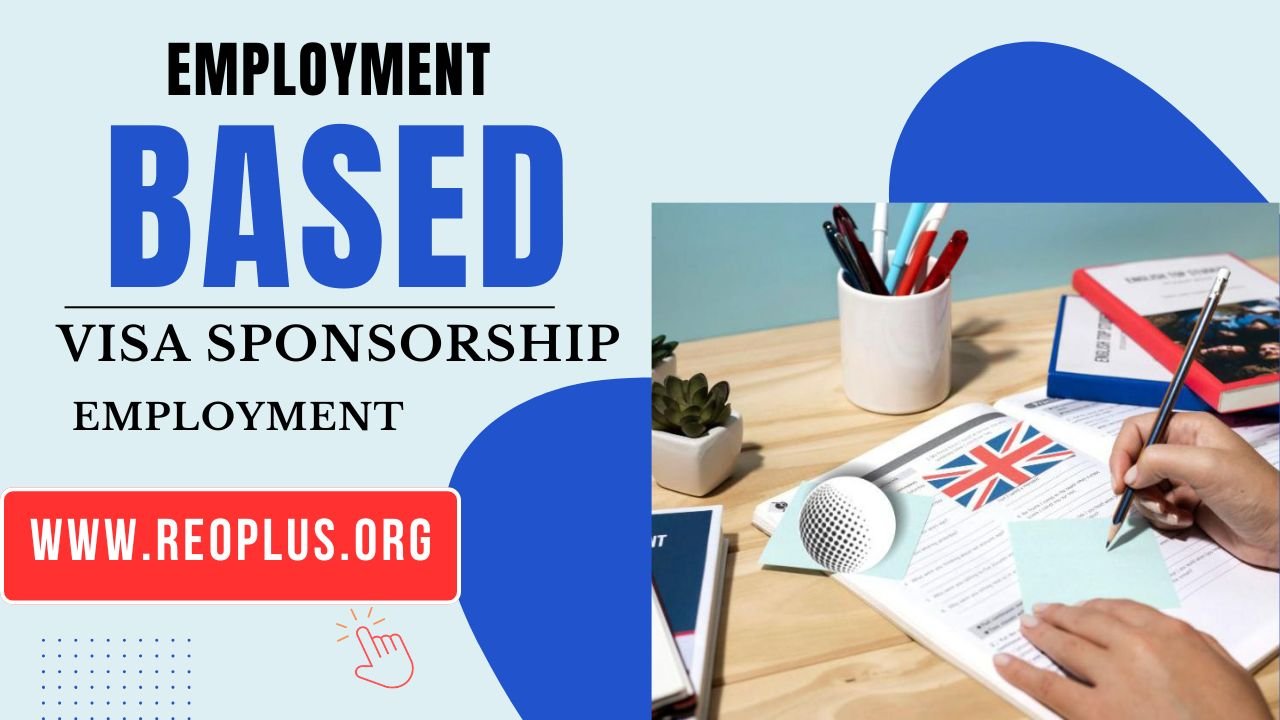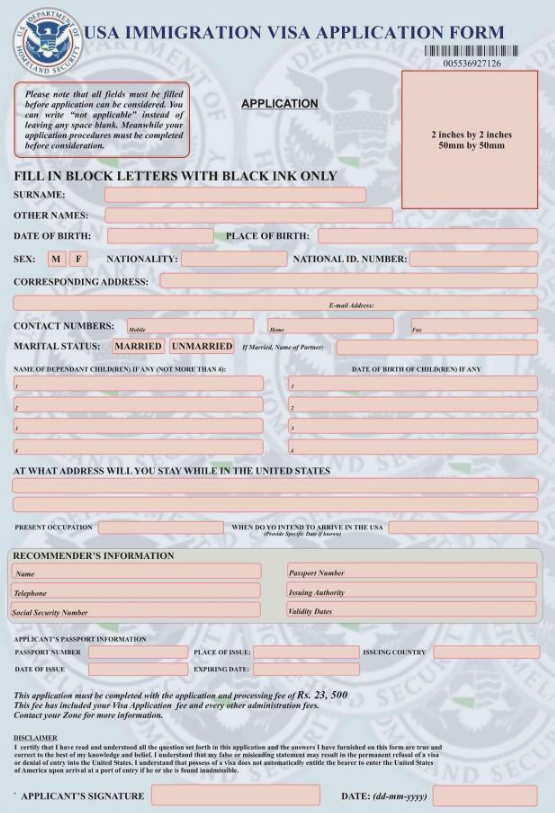Employment
Navigating the world of employment-based visa sponsorship can be challenging. This topic is crucial for anyone seeking to work in another country.
Employment-based visa sponsorship allows companies to hire foreign workers. It’s a process that helps fill gaps in the workforce and brings in skilled talent. For many, this is the first step toward building a new life in a different country.
Understanding how this process works can be the key to success. From employers to potential employees, knowing the ins and outs of 👉visa sponsorship👈 is essential. This introduction will guide you through the basics, offering insights on what to expect and how to prepare. Let’s explore the essentials of employment-based visa sponsorship and why it matters.
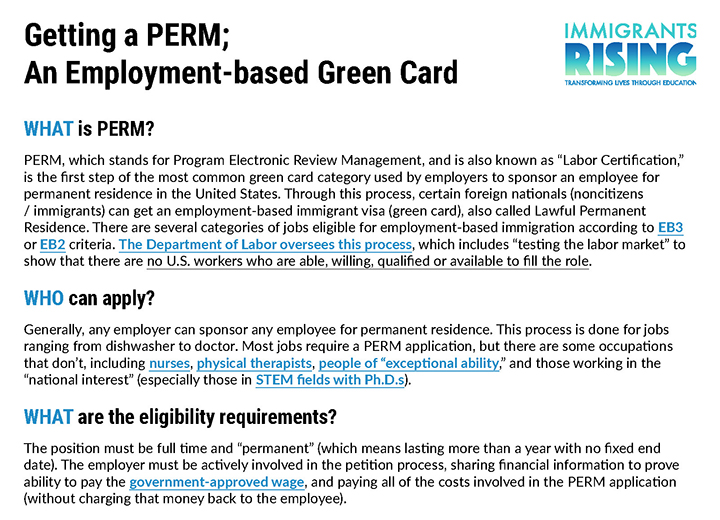
Types of Employment VISAS
Employment based visa sponsorship allows skilled workers to work in another country. These visas can be temporary or permanent. Companies sponsor workers to fill skill gaps. The process and types of visas vary by country. This post will explore the types of employment visas available.
How Long Does It Take to get an Employer Sponsored VISA in Australia
Getting an employer sponsored visa in Australia can be a long process. The processing time depends on the type of visa and the application details. Here are some general timeframes:
- Temporary Work Visas: Usually take 1 to 3 months.
- Permanent Work Visas: Can take 6 to 12 months or longer.
Several factors affect the processing time:
- Completeness of the application.
- Demand for the specific visa.
- Whether additional information is required.
Applicants should ensure their documents are complete and accurate. This helps speed up the process. It’s also useful to check the Australian immigration website for updates.
Temporary Work VISAS
Temporary work visas allow workers to stay in a country for a limited time. These visas are typically for specific jobs or projects. In Australia, there are several types of temporary work visas:
- Temporary Skill Shortage (TSS) Visa: For skilled workers in occupations that are in demand.
- Working Holiday Visa: For young people who want to travel and work.
- Short Stay Specialist Visa: For short-term, highly specialized work.
Each type of visa has its own requirements. Applicants must meet the criteria to be eligible. For example, the TSS visa requires work experience and English proficiency.
Temporary work visas are a good option for gaining international experience. They can also be a pathway to permanent residency in some cases.
Permanent Work VISAS
Permanent work visas allow workers to live and work in a country indefinitely. These visas offer more stability and long-term opportunities. In Australia, some common permanent work visas include:
- Employer Nomination Scheme (ENS): For skilled workers nominated by an employer.
- Regional Sponsored Migration Scheme (RSMS): For workers in regional areas.
- Skilled Independent Visa: For skilled workers not sponsored by an employer.
Permanent work visas have strict eligibility requirements. Applicants need to prove their skills, qualifications, and experience. They also need to pass health and character checks.
These visas provide a pathway to permanent residency. This means access to more benefits and the ability to sponsor family members. It’s important to understand the specific requirements for each visa type. This helps in preparing a strong application.
Sponsorship Process
The employment-based visa sponsorship process can be complex. It involves several steps, rules, and responsibilities. Both employers and employees need to understand their roles. This blog will guide you through the sponsorship process. It will cover key responsibilities for both parties. This will help ensure a smooth and successful visa application.
Will you now or in the Future Require Employment Based VISA Sponsorship
When applying for a job, you may encounter this question. Employers ask this to plan for visa sponsorship needs. Here’s what you need to consider:
- Current visa status: Are you already in the country on a work visa?
- Future plans: Will you need a visa sponsorship in the future?
- Type of visa: Know which visa category applies to you (e.g., H-1B, L-1).
Answering this question accurately is important. It helps employers understand your situation. It can also affect your job application process.
Consider these steps:
- Check your current visa status. Make sure it is up-to-date.
- Research visa types that fit your qualifications.
- Discuss with potential employers about their willingness to sponsor.
- Be honest about your visa needs during interviews.
Employer Responsibilities
Employers play a key role in the sponsorship process. They must fulfill several responsibilities to ensure compliance:
- Job Posting: Ensure the job is advertised properly.
- Labor Certification: Prove that no qualified U.S. workers are available.
- Filing Petitions: Submit necessary forms to the immigration authorities.
- Legal Fees: Cover the costs related to the visa application.
- Compliance: Follow all immigration laws and regulations.
Employers must keep thorough records. This includes job postings, applications, and interview notes. Proper documentation helps in case of audits. Failing to meet these responsibilities can result in penalties. It may also affect future sponsorship capabilities.
Employee Responsibilities
Employees also have important roles in the visa process. Their responsibilities help ensure a smooth application:
- Provide Accurate Information: Ensure all personal and professional details are correct.
- Documentation: Submit necessary documents, like degrees and work experience certificates.
- Timely Updates: Inform employers of any changes in status or personal details.
- Legal Status: Maintain valid visa status throughout employment.
- Communication: Stay in regular contact with the employer and immigration lawyer.
Employees should be proactive. Follow up on the status of your application. Ask questions if you don’t understand something. Keeping track of deadlines is crucial. Missing a deadline can delay the process or result in denial.
Eligibility Criteria
Employment based Visa Sponsorship is a vital process for many companies. It allows employers to hire skilled workers from other countries. Understanding the eligibility criteria is crucial for both employers and employees. These criteria ensure that the sponsorship is legitimate and meets legal standards. This blog post will cover the costs, employer qualifications, and employee qualifications.
You May Also Like:
How Much Does It Cost a Company to Sponsor a Work VISA
Sponsoring a work visa involves various costs for a company. These costs can add up quickly. Here are some of the main expenses:
- Filing fees: These fees are paid to the government for processing the visa application.
- Attorney fees: Many companies hire immigration lawyers to handle the paperwork.
- Recruitment costs: Finding and hiring a foreign worker can be expensive.
- Compliance costs: Companies must follow specific regulations and may need to invest in training.
Here is a table summarizing the typical costs:
| Expense Type | Estimated Cost |
|---|---|
| Filing Fees | $1,000 – $5,000 |
| Attorney Fees | $2,000 – $6,000 |
| Recruitment Costs | $1,000 – $3,000 |
| Compliance Costs | $500 – $2,000 |
Overall, the total cost can range from $4,500 to $16,000 or more. These costs vary depending on the visa type and the complexity of the case.
Employer Qualifications
Employers must meet specific qualifications to sponsor a work visa. These qualifications ensure that the company is legitimate and capable of hiring foreign workers.
- Business legitimacy: The company must be a legally registered business in good standing.
- Financial stability: Employers must prove they can pay the sponsored employee.
- Compliance with labor laws: The company must follow all relevant labor laws and regulations.
- Job offer: There must be a genuine job offer for the foreign worker.
Employers may also need to provide documentation such as tax returns, financial statements, and business licenses. These documents help demonstrate the company’s ability to support the sponsored employee.
Moreover, the company must show that the job cannot be filled by a local worker. This often involves advertising the job and documenting recruitment efforts. Meeting these qualifications is essential for a successful visa sponsorship.
Employee Qualifications
Employees must also meet certain qualifications to be sponsored for a work visa. These qualifications vary depending on the visa type but generally include:
- Relevant skills and experience: The employee must have the skills and experience required for the job.
- Education: Some visas require a specific level of education or degree.
- Clean background: Employees must pass background checks and have no criminal record.
- Health requirements: Some visas require medical examinations to ensure the employee is healthy.
In addition, employees must provide various documents as part of the application process. These documents can include diplomas, work certificates, and proof of identity.
Meeting these qualifications is crucial for the employee’s visa application to be approved. Both the employer and the employee must work together to ensure all requirements are met.
Application Steps
Employment based VISA Sponsorship is a process that allows employers to hire foreign workers for specialized jobs. This process involves several steps, including determining the need for sponsorship, gathering necessary documents, and submitting applications. Understanding these steps can make the process smoother and increase the chances of success for both the employer and the employee.
Will you Require Employment based Immigration Sponsorship in the Future
Determining if you will need employment based immigration sponsorship is the first step. This decision depends on several factors.
Consider the following:
- Job Requirements: Does the position require skills that are hard to find locally?
- Company Policy: Does your company have a policy on hiring foreign workers?
- Employee Qualification: Does the potential employee meet the qualifications?
It is important to understand the implications of sponsorship. It involves costs and a commitment from both parties. Sponsoring a foreign worker can provide access to a larger talent pool. However, it also requires navigating complex immigration laws.
Employers should ask themselves:
- Can the role be filled locally?
- Is the foreign worker the best fit for the job?
Answering these questions helps in making an informed decision about sponsorship.
Gathering Documents
Gathering the right documents is a crucial step in the visa sponsorship process. Proper documentation ensures that the application process goes smoothly.
Here are the key documents needed:
- Job Offer Letter: A formal offer from the employer to the foreign worker.
- Labor Certification: Proof that there are no qualified local workers for the job.
- Employee’s Resume: Detailed work history and qualifications of the employee.
- Proof of Education: Certificates and diplomas to verify educational background.
- Passport: A valid passport of the foreign worker.
Organizing these documents in advance can save time and prevent delays. Employers must ensure all information is accurate and up-to-date. Missing or incorrect documents can lead to application denials.
👇Submitting Application Form👇
Submitting the visa application is the final step in the sponsorship process. This step involves completing forms and providing supporting documents to immigration authorities.
Here is a typical process:
- Complete Form I-129: This is the Petition for a Nonimmigrant Worker.
- Attach Supporting Documents: Include all necessary documents like job offer letter and labor certification.
- Pay Filing Fees: Ensure that all required fees are paid.
- Submit Application: Send the complete application package to the appropriate USCIS office.
After submission, employers and employees should be prepared for follow-up questions from immigration authorities. It is important to respond promptly to any requests for additional information. Keeping track of application status helps in managing timelines and expectations.
Cost of Sponsorship
Employment based visa sponsorship can be complex. It involves different costs for employers and employees. Understanding these costs is important. Employers need to plan their budgets. Employees need to know what to expect. This post will cover the cost of sponsorship in detail.
Fees For Employers
Employers must pay several fees when sponsoring a visa. These fees can be high. Planning ahead is crucial.
Here are some common fees:
- Filing Fee: This is paid to submit the visa petition. The cost is usually around $460.
- Fraud Prevention Fee: This fee helps prevent visa fraud. It usually costs $500.
- Premium Processing Fee: This fee speeds up the processing. It costs $2,500.
- Attorney Fees: Hiring an attorney can help. Their fees vary but can be several thousand dollars.
These are just the basic fees. There may be additional costs. For example, travel expenses for interviews. Or costs related to preparing documents. Employers must consider all these expenses. Proper budgeting is essential.
Fees for Employees
Employees also face costs during the visa process. These fees can add up quickly.
Here are some common fees:
- Visa Application Fee: This fee is required to apply for the visa. It usually costs around $190.
- Medical Examination Fee: A medical exam is often required. This can cost between $200 and $400.
- Travel Expenses: Employees may need to travel for interviews. These costs vary depending on the location.
- Document Preparation Fees: Preparing documents may have associated costs. This includes translations or notarizations.
Employees should prepare for these expenses. Saving money in advance can help. Knowing the costs ahead of time is important. This helps avoid surprises.
You May Also Like:
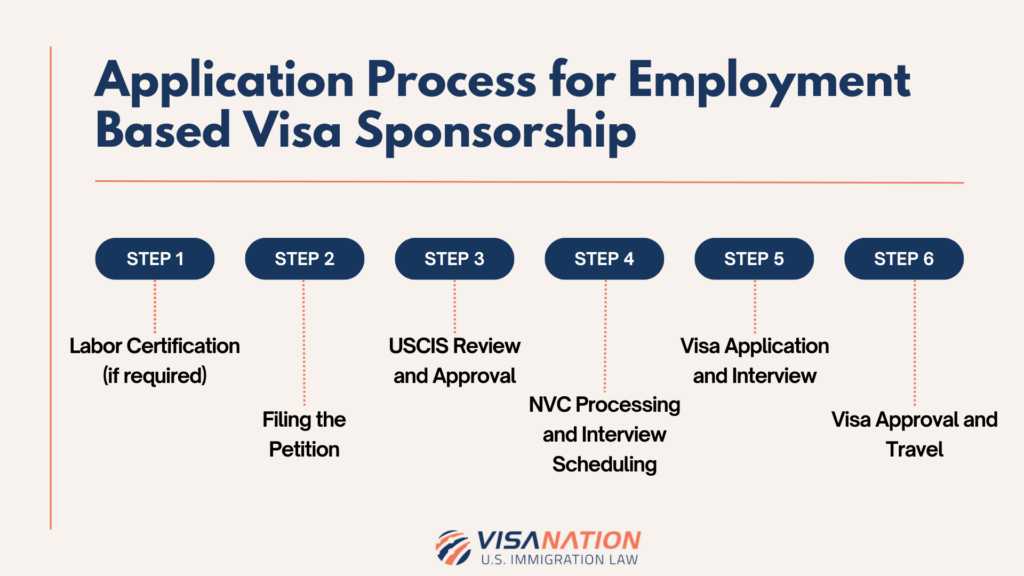
Common Challenges
Employment based visa sponsorship is a complex process. It allows companies to hire foreign workers. Many employers face challenges during this process. Understanding these challenges can help both employers and employees. This blog will cover some common issues.
What is the Difference Between work VISA and Sponsorship
A work visa and sponsorship are related but different. A work visa is a document that allows a person to work in a foreign country. It is issued by the government. Sponsorship is when a company supports a foreign worker’s visa application.
Key differences:
- Work Visa: Granted by the government.
- Sponsorship: Provided by an employer.
- Work Visa: Shows the right to work.
- Sponsorship: Shows company support.
Both are necessary for legal employment in a foreign country. The process starts with the employer. They must prove they need a foreign worker. Once approved, the worker applies for a visa. This can be a lengthy process.
Delays in Processing
Delays are a common challenge in visa sponsorship. Processing times can vary greatly. Sometimes it takes months or even years. Reasons for delays include:
- Backlogs at government offices.
- Incomplete applications.
- Security checks.
- Additional documentation requests.
These delays can cause problems for both employers and employees. Employers may lose potential talent. Employees may miss job opportunities. Planning ahead is crucial. Submitting complete applications can help avoid delays.
Rejections and Appeals
Rejections are another challenge. Not every application gets approved. Common reasons for rejections include:
- Incomplete applications.
- Insufficient documentation.
- Security concerns.
- Failure to meet eligibility criteria.
If an application is rejected, there is an option to appeal. The appeals process can be lengthy and complicated. It involves:
- Submitting additional documents.
- Writing a formal appeal letter.
- Attending hearings.
Having a legal expert can be helpful. They can guide through the appeals process. Appeals can be successful if handled properly. It is important to understand the reasons for rejection. This helps in preparing a stronger case.
Impact on Job Market
Employment based visa sponsorship has a significant impact on the job market. It allows employers to hire foreign workers to fill positions. This can help address labor shortages and bring in skilled professionals. Understanding this impact is important for businesses and job seekers.
Labor Shortages
Labor shortages are a growing concern for many industries. Many sectors struggle to find enough workers to fill open positions. This is where employment based visa sponsorship can play a key role.
Here are some benefits of visa sponsorship for addressing labor shortages:
- Filling critical gaps: Employers can bring in foreign workers for hard-to-fill roles.
- Supporting economic growth: More workers mean more productivity and growth.
- Reducing delays: Projects and services can continue without disruptions.
Many industries, like healthcare and technology, face severe labor shortages. By sponsoring visas, these industries can maintain their operations. This helps ensure that essential services are available to the public.
Skilled Workforce
Having a skilled workforce is crucial for innovation and competitiveness. Employment based visa sponsorship helps bring in skilled professionals from around the world. This can be beneficial for many reasons.
Here are some advantages of a skilled workforce:
- Boosting innovation: Skilled workers bring new ideas and perspectives.
- Enhancing productivity: Experienced workers can improve efficiency.
- Meeting high demand: Industries like IT and engineering need specialized skills.
Companies can compete better globally by having access to a diverse talent pool. This can lead to improved products and services. It also helps in creating a dynamic and adaptable work environment.
You May Also Like:
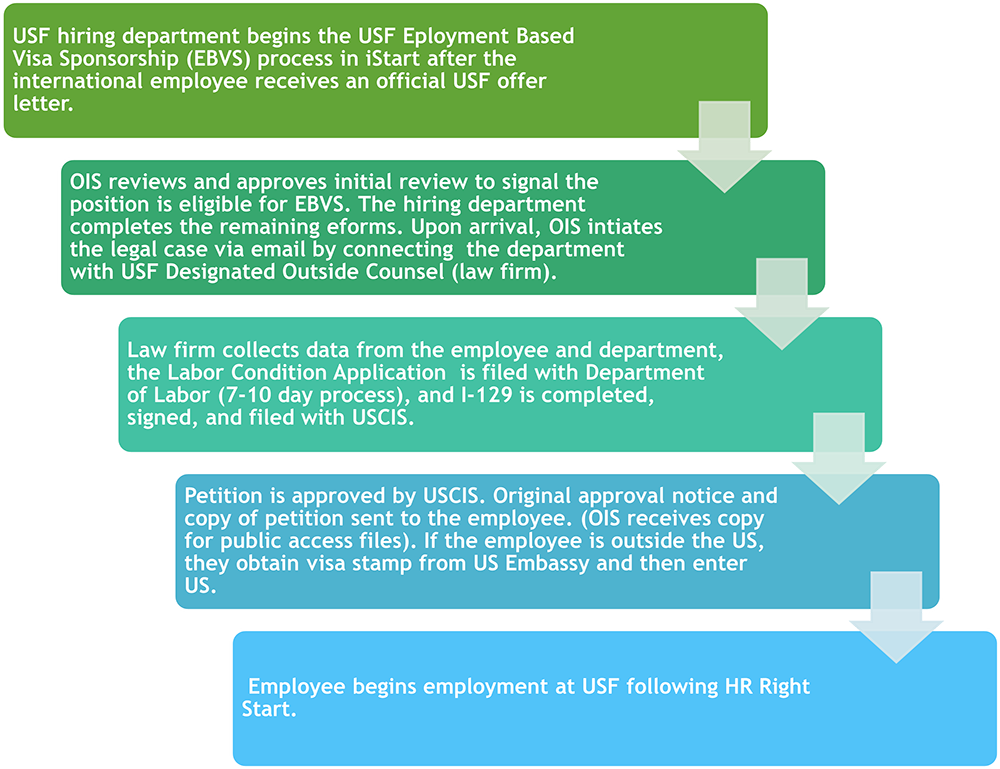
Future Trends
Employment-based visa sponsorship is a process where employers sponsor foreign workers to live and work in a new country. This system helps fill job vacancies that cannot be met by local workers. It also enriches the workforce with diverse skills and perspectives. With globalization, the trends in employment-based visa sponsorship are constantly evolving. Keeping an eye on future trends is essential for both employers and potential employees.
Policy Changes
Changes in policies can greatly impact employment-based visa sponsorship. Governments may introduce new rules or modify existing ones to address labor market needs. Here are some key factors that could influence policy changes:
- Economic Conditions: Economic growth or recession can lead to adjustments in visa policies.
- Political Climate: Shifts in government can bring new immigration policies.
- Labor Market Demands: Shortages in specific industries may prompt policy updates.
Recent trends show a focus on attracting highly skilled workers. Countries are introducing fast-track visas for tech professionals, engineers, and healthcare workers. These changes aim to fill critical gaps in the workforce quickly.
Another significant trend is the emphasis on remote work. Some countries are creating digital nomad visas. These policies allow foreign workers to live in a country while working for employers abroad. This flexibility benefits both employees and local economies.
Global Mobility
Global mobility has become a crucial aspect of employment-based visa sponsorship. The ability to move talent across borders efficiently is vital for businesses. It helps them stay competitive in the global market. Here are some current trends in global mobility:
- Remote Work: The rise of remote work has increased the need for flexible visa options.
- Short-term Assignments: Companies are opting for short-term assignments to address immediate needs.
- Family Inclusion: Visa policies are increasingly considering the needs of workers’ families.
With remote work becoming more common, employees can work from anywhere. This trend has led to new visa categories specifically designed for remote workers. These visas often come with fewer requirements and faster processing times.
Short-term assignments are also on the rise. Employers are sending employees on short-term projects to different countries. These assignments help meet temporary needs without long-term commitments. Many countries are now offering visas tailored for such short-term stays.
Family inclusion is another important aspect. More countries are now allowing visa holders to bring their families. This change makes it easier for workers to relocate without worrying about family separation. It also makes the destination country more attractive to top talent.
Conclusion
Securing an employment-based visa sponsorship can be a complex process. It requires patience and understanding of legal procedures. Employers play a crucial role in this journey. Research and preparation are key. Seek professional advice to navigate the details. Stay informed and organized.
This helps to avoid common pitfalls. A successful visa sponsorship opens doors to new opportunities. With determination, you can achieve your goals. Stay positive and proactive. Your efforts will pay off.

